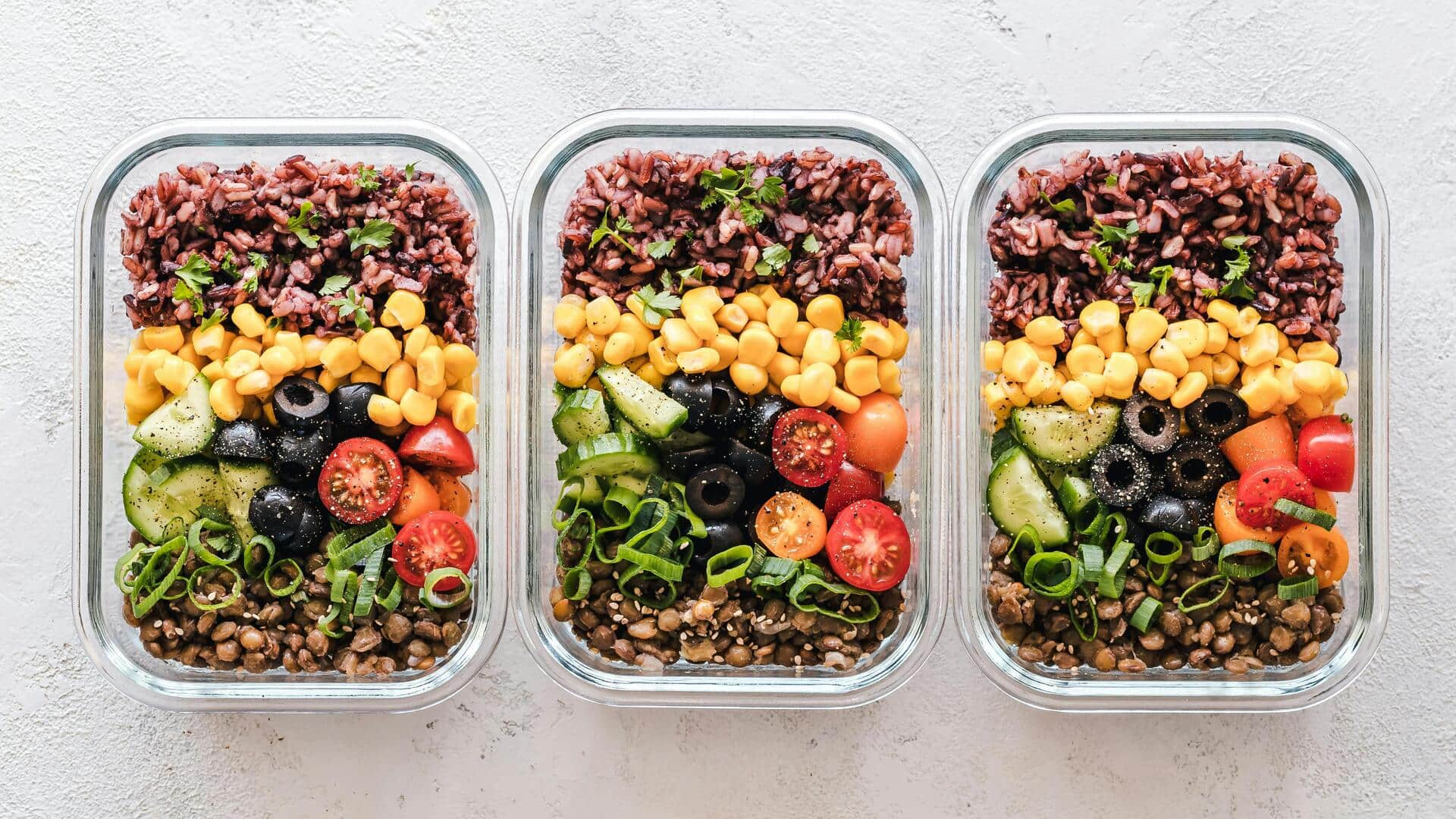
Easy tips for healthy portion control
What's the story
Balancing your plate for a healthy diet can be tricky, especially if you are a beginner. But with the right tips, you can make sure your meals are nutritious and well-portioned. This article provides practical insights into portion control and meal balancing, making it easier for you to eat healthily. By following these guidelines, you can make informed choices that promote overall well-being without compromising on taste or variety.
Tip 1
Understand serving sizes
Understanding serving sizes is key to portion control. Serving sizes are commonly indicated on food packaging and can differ from one food item to another. Familiarizing yourself with these measurements can help you avoid overeating. Use measuring cups or a kitchen scale to get accurate portions, especially when starting out. This practice not only helps in managing calorie intake but also ensures that you get a balanced mix of nutrients.
Tip 2
Fill half your plate with vegetables
Vegetables are low in calories but high in vitamins, minerals, and fiber. Filling half your plate with vegetables at every meal ensures that you get enough nutrients without consuming too many calories. Go for a variety of colors and types to ensure a wide range of nutrients. Not only does this practice promote health, but it also adds flavor and texture to your meals.
Tip 3
Choose whole grains over refined grains
Whole grains are a healthier option than refined grains, as they are packed with fiber and essential nutrients that refined grains lack. When balancing your plate, opt for whole grains such as brown rice, quinoa, or whole wheat bread instead of white rice or regular pasta. Whole grains keep you fuller for longer and help with digestion, making them an ideal choice for any meal.
Tip 4
Include lean proteins wisely
Proteins are essential for repairing and building muscles, but they should be consumed in moderation as part of a balanced diet. Choose lean protein sources like beans or lentils, and limit red meat consumption. A palm-sized portion of protein per meal is generally sufficient for most people, ensuring you meet your dietary needs without overindulging.
Tip 5
Limit added sugars and unhealthy fats
Added sugars and unhealthy fats should be limited in any balanced diet plan. They add extra calories without any nutritional value, which can lead to weight gain if consumed in excess over time. Instead, opt for natural sweeteners like fruits when you want something sweet, and use healthy fats like olive oil sparingly while cooking or dressing salads.